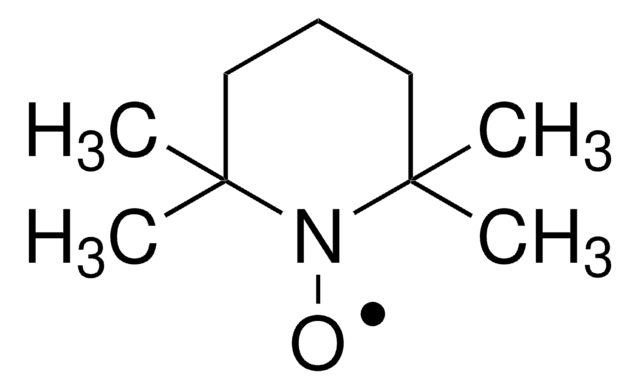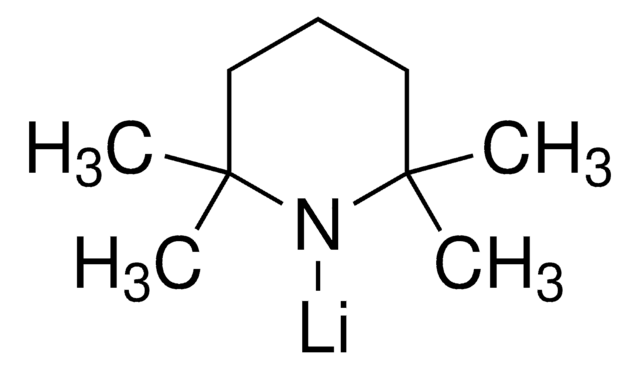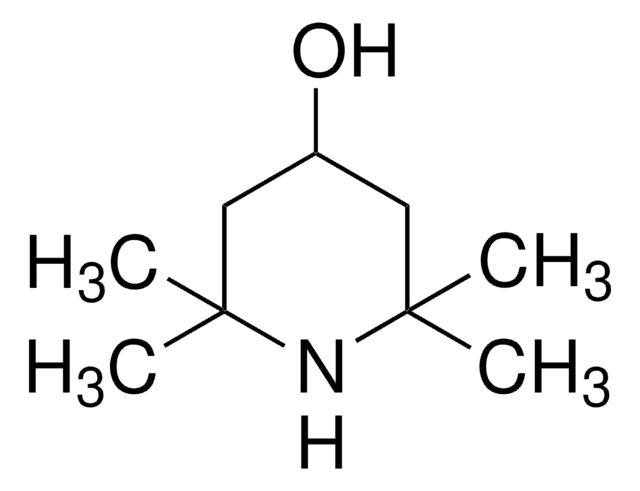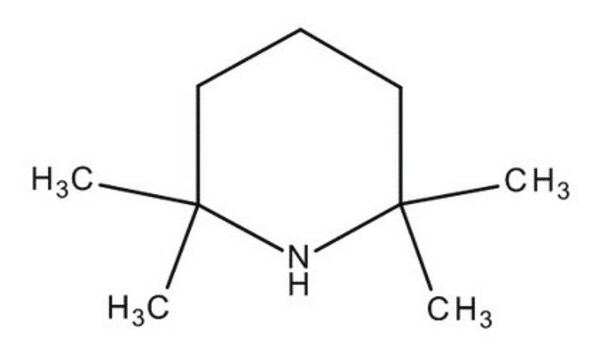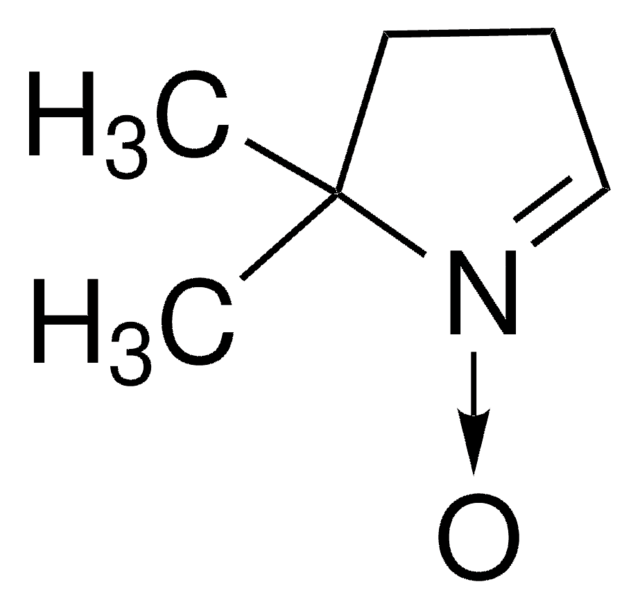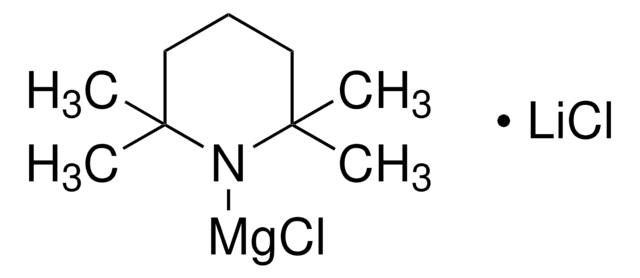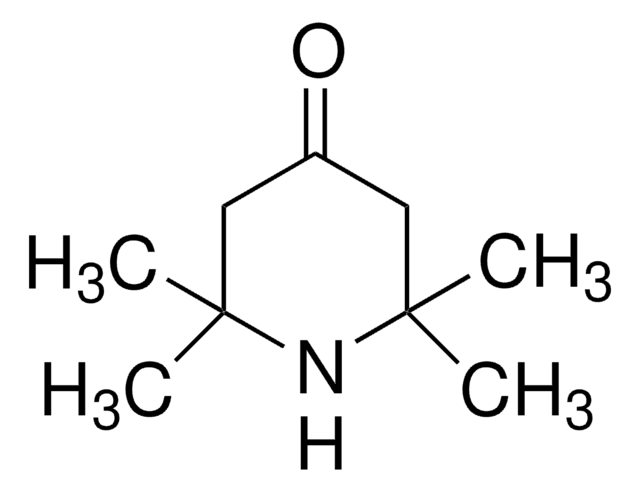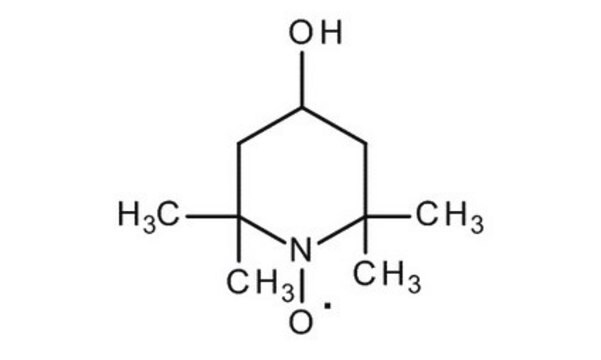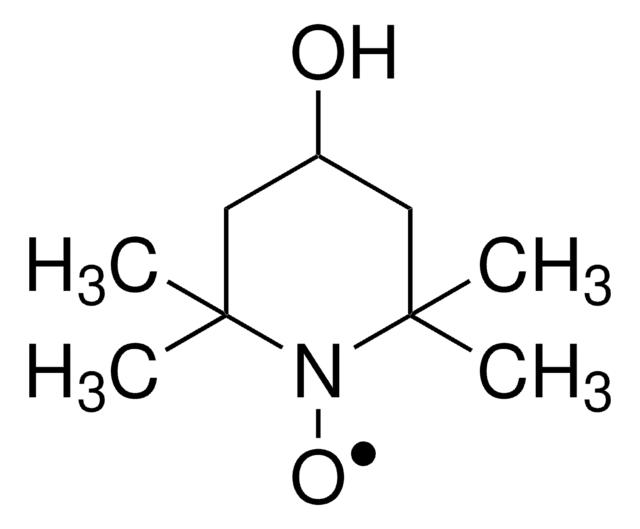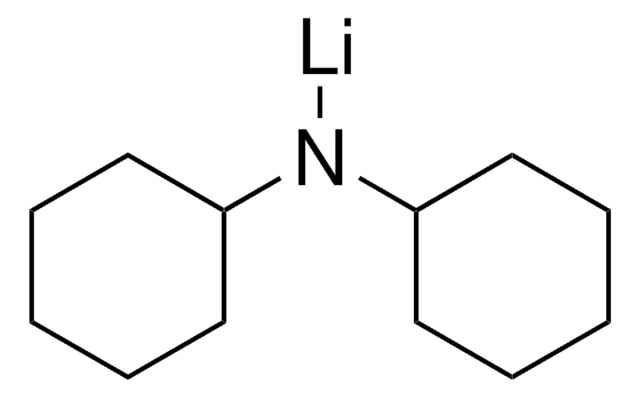Kluczowe dokumenty
115754
2,2,6,6-Tetramethylpiperidine
≥99%
Synonim(y):
2,2,6,6-tetrametylopiperydyd, 2,2,6,6-tetrametylopiperydyna, Norpempidyna, TEMP, TMPH
About This Item
Polecane produkty
Poziom jakości
Próba
≥99%
współczynnik refrakcji
n20/D 1.445 (lit.)
bp
152 °C (lit.)
gęstość
0.837 g/mL at 25 °C (lit.)
ciąg SMILES
CC1(C)CCCC(C)(C)N1
InChI
1S/C9H19N/c1-8(2)6-5-7-9(3,4)10-8/h10H,5-7H2,1-4H3
Klucz InChI
RKMGAJGJIURJSJ-UHFFFAOYSA-N
Szukasz podobnych produktów? Odwiedź Przewodnik dotyczący porównywania produktów
Opis ogólny
Zastosowanie
- Allylated tertiary amines via allylic amination of allylic chlorides.
- Hydroxylamines via oxidation in the presence of oxone as an oxidant.
- Sulfenamide compounds by reacting with heterocyclic thiols in the presence of iodine as an oxidant.
- N-methylated amines via N-methylation by reacting with CO2 and phenylsilane.
- Propargylamines via three-component Mannich coupling reaction with aldehydes and alkynes.
Hasło ostrzegawcze
Danger
Zwroty wskazujące rodzaj zagrożenia
Zwroty wskazujące środki ostrożności
Klasyfikacja zagrożeń
Acute Tox. 4 Oral - Eye Dam. 1 - Flam. Liq. 3 - Met. Corr. 1 - Skin Corr. 1A - STOT SE 3
Organy docelowe
Respiratory system
Kod klasy składowania
3 - Flammable liquids
Klasa zagrożenia wodnego (WGK)
WGK 2
Temperatura zapłonu (°F)
98.6 °F - closed cup
Temperatura zapłonu (°C)
37 °C - closed cup
Środki ochrony indywidualnej
Eyeshields, Faceshields, Gloves, type ABEK (EN14387) respirator filter
Wybierz jedną z najnowszych wersji:
Certyfikaty analizy (CoA)
Nie widzisz odpowiedniej wersji?
Jeśli potrzebujesz konkretnej wersji, możesz wyszukać konkretny certyfikat według numeru partii lub serii.
Masz już ten produkt?
Dokumenty związane z niedawno zakupionymi produktami zostały zamieszczone w Bibliotece dokumentów.
Klienci oglądali również te produkty
Produkty
COMU is a non-explosive coupling agent suitable for solution phase & solid phase peptide synthesis. Its activity meets or exceeds that of HATU and its water-soluble by-product are easily removed.
Global Trade Item Number
| SKU | GTIN |
|---|---|
| 115754-10G | 4061838703576 |
| 115754-25G | 4061838703583 |
| 115754-5G | 4061838703590 |
| 115754-5KG |
Nasz zespół naukowców ma doświadczenie we wszystkich obszarach badań, w tym w naukach przyrodniczych, materiałoznawstwie, syntezie chemicznej, chromatografii, analityce i wielu innych dziedzinach.
Skontaktuj się z zespołem ds. pomocy technicznej